On the dinosaur trail from Winton to the Great Ocean Road
Ten of the best places to see fossils, footprints and big-boned beasts.
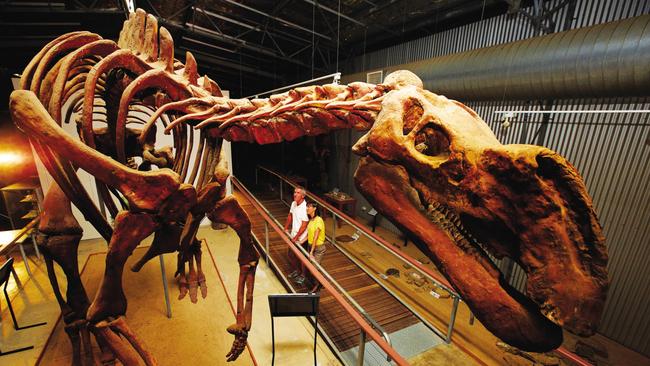
1 Australia’s newest dinosaur is also its largest. Australotitan cooperensis, aka the Southern Titan – a giant plant-eating sauropod as long as a basketball court, taller than a B-double truck and twice the size of a T-rex – was confirmed by scientists as a new species earlier this month. Nicknamed Cooper because the fossilised bones were discovered on an outback Queensland cattle station near Cooper Creek in 2006, it is believed to be the biggest creature that roamed these parts. It’s just one of the 98-million-year-old fossils on display at the new Eromanga Natural History Museum, purpose-built on the property where Cooper was found, 110km west of Quilpie. Take a guided tour, get your hands dirty at the megafauna dig and learn how to prepare fossils for display.
Stay Cooper’s Country Lodge, self-contained accommodation at the museum.
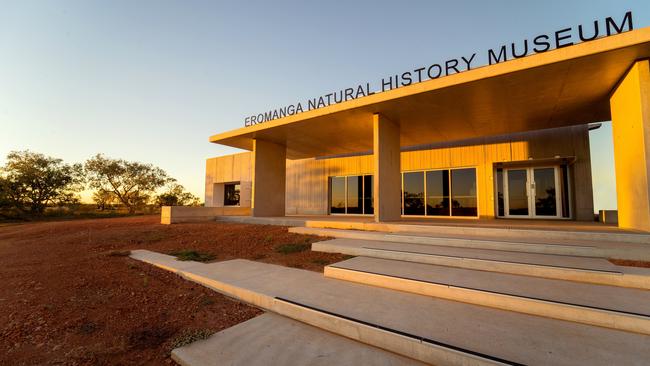
2 One hundred million years ago, much of outback Queensland was teeming with dinosaurs of all shapes and sizes. Some of the most important finds were unearthed in and around Winton, 665km north of Eromanga. Australovenator wintonensis, also known as Banjo after Banjo Patterson wrote Waltzing Matilda while visiting friends near Winton in 1895, is the largest carnivorous dinosaur and the most complete theropod skeleton yet found in Australia. It’s on show at the Age of Dinosaurs Museum on the outskirts of town, along with bones of the 15m-long plant-eating Matilda (Diamantinasaurus matildae) and several yet to be named sauropods. New discoveries are being made all the time, and you can join digs as well as help out in the museum’s fossil lab, the largest in the southern hemisphere.
Stay North Gregory Hotel, Winton
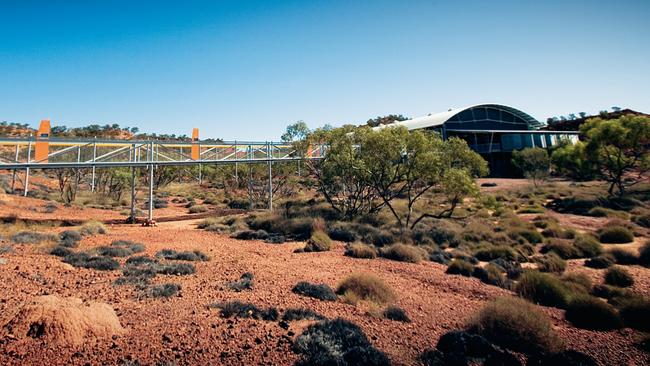
3 Back when dinosaurs were thick on the ground, Banjo – or another flesh-eating apex predator like it – chased a horde of much smaller dinosaurs on the muddy shores of a lake about a 90-minute drive south of Winton. It’s the only known site of a dinosaur stampede in the world. The 3300 or so footprints made in the mud have been fossilised, and palaeontologists believe at least 150 dinosaurs were involved, some the size of chickens, others the size of emus. The hunter was a large theropod, probably 8-9m long, with sharp claws and even sharper teeth, just like Banjo. Guided 45-minute tours of the Dinosaur Stampede National Monument at Lark Quarry Conservation Park run several times daily.
Stay As above
4 Stumbling across dinosaur remains is nothing new for Queensland farmers. In 1963, grazier Doug Langdon unearthed what was then the most complete dinosaur skeleton found in Australia, putting the tiny town of Muttaburra (about 200km east of Winton and close to the geographical centre of Queensland) on the palaeontology map. The bones are in the Queensland Museum, but you’ll find a replica inside the Muttaburrasaurus Interpretation Centre. You can snap a selfie with another life-sized replica of the 8m-long Muttaburrasaurus (locals just call him Mutt) at nearby Hughenden, where a skeletal replica is in the Flinders Discovery Centre, along with information about the other pterosaurs, ichthyosaurs and kronosauruses found in the district.
Stay Royal Hotel, Hughenden
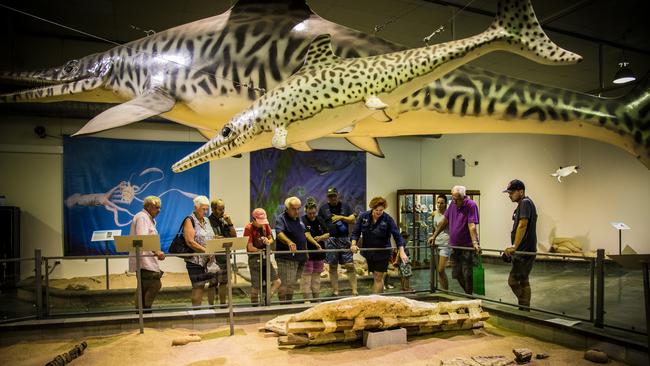
5 The best dinosaur selfie opportunity is at Richmond, an hour’s drive west of Hughenden. Here, you can perch inside the jaws of a life-sized model of the carnivorous Kronosaurus, a marine giant with teeth as long as a school ruler and a head twice the size of that of T-rex. Kronosaurus called this area home when it was an inland sea 100 million years ago. Taking pride of place inside the Koronosaurus Korner museum is the Richmond pliosaur, the best-preserved marine vertebrate skeleton in the country, as well as various bits of kronosaurus, ichthyosaurs, turtles, fish, ammonites and Minmi, an armoured dinosaur discovered nearby in 1989. Have a go at finding your own prehistoric treasures at the fossil hunting area on the town common, signposted 12km north of Richmond. All that is required is a small pick or a chisel and hammer, and a permit, which can be purchased at the museum.
Stay Ammonite Inn, Richmond; (07) 4741 3932
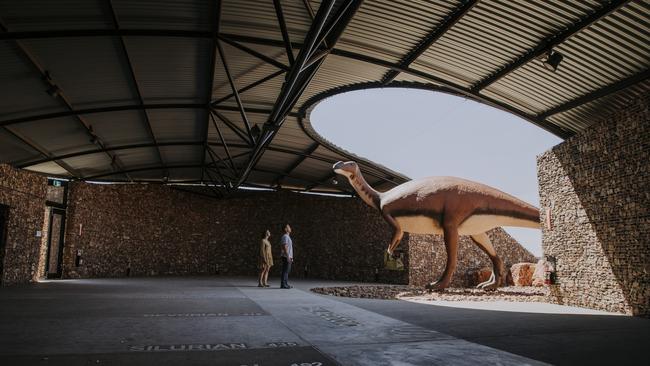
6 Roughly halfway between Birdsville and Mount Isa, Boulia is famous for the mysterious floating balls of fire known as the Min Min lights, which reportedly dance across the plains after dark. Lesser known is the extraordinary collection of marine fossils inside the Stonehouse Museum behind the old hospital. The star exhibit is an almost complete plesiosaur, a long-necked reptile with needle-like teeth and a body like a giant turtle that swam like a sea lion flapping its fins. Up to 12m long, half of which comprised its neck, it’s an Aussie version of the Loch Ness monster.
Stay Desert Sands Motel, Boulia
7 Outback Queensland is not the only place where dinosaurs roamed. Victoria’s Great Ocean Road has yielded a number of prehistoric finds over the years, include a scary claw found at Cape Otway in 2014. This 15cm sickle-shaped finger bone is from a fast-running, predatory, meat-eating beast that once stalked the southern forests. In the past 40 years more than five dinosaur species have been identified at Cape Otway and nearby Dinosaur Cove, including Australia’s first elaphrosaur, as well as dinosaur tracks found 10km away in the sandstone at Milanesia Beach.
Stay Cape Otway Lightstation
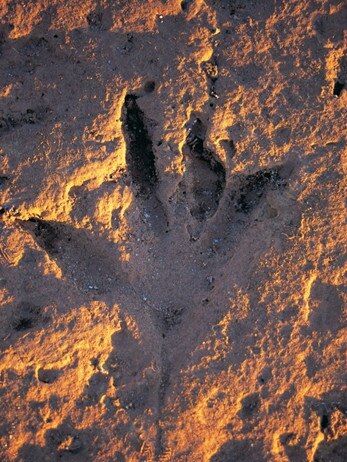
8 On the other side of the continent, the fossilised tracks of up to 21 different kinds of dinosaurs have been identified along the coast between Broome and James Price Point on the Dampier Peninsula. A mind-boggling 130 million years old, some of the footprints are 1.7m long, the largest found in the world to date. The best places to see them are at Cable Beach, Gantheaume Point and Reddell Beach at low tide. Ask for a map at the Broome visitor centre. Broome Dinosaur Adventures runs half-day boat trips to dinosaur sites.
Stay Cable Beach Club Resort & Spa
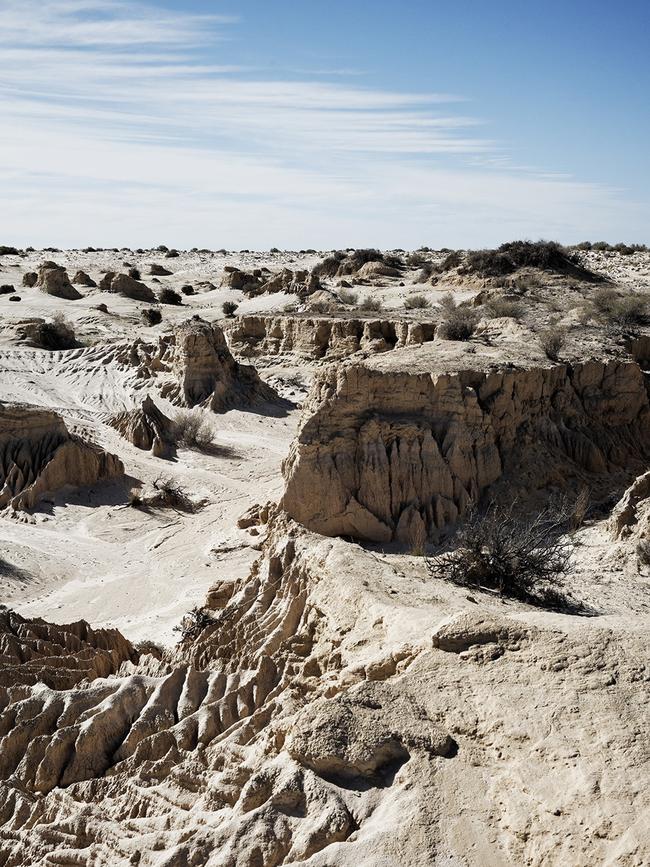
9 Imagine bumping into a half-tonne wombat more than a metre high. Or a 3m-tall kangaroo. In the dark. If you were sitting around eating shellfish on the shores of Lake Mungo in far western NSW about 45,000 years ago, there was a good chance of that happening, according to the fossil remains of several zygomaturus, procoptodon and other mega fauna unearthed in the dunes. There’s evidence people were around when these prehistoric giants roamed the land; the world’s oldest cremated human remains were found here, buried in the sand. A display at the visitor centre at Mungo National Park, 108km northeast of Mildura, helps to explain events but tours give greater insight, taking visitors on to the formation known as a lunette where many of the discoveries were made.
Stay Mungo Lodge, Arumpo
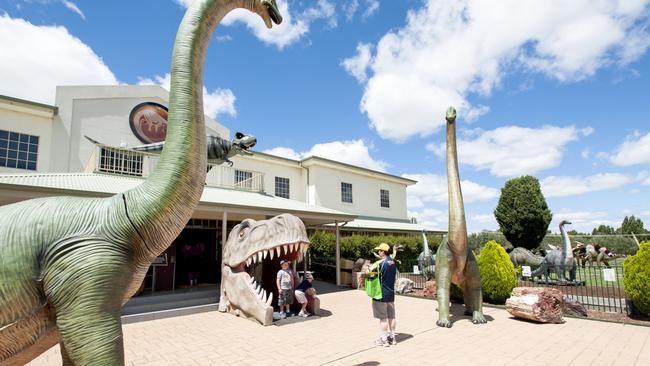
10 See dinosaurs in the dark on a torchlit tour of Canberra’s National Dinosaur Museum. Home to more than 300 fossil exhibits and 23 skeletons, along with lots of replicas and models, it’s one of the largest collections in the country. Young children love the dino-themed garden where climbing on sleeping muttaburrasaurus and ankylosaur is encouraged. For visitors planning to do the night-time tour, be warned: some of the dinosaurs move.
Stay East Hotel, Kingston

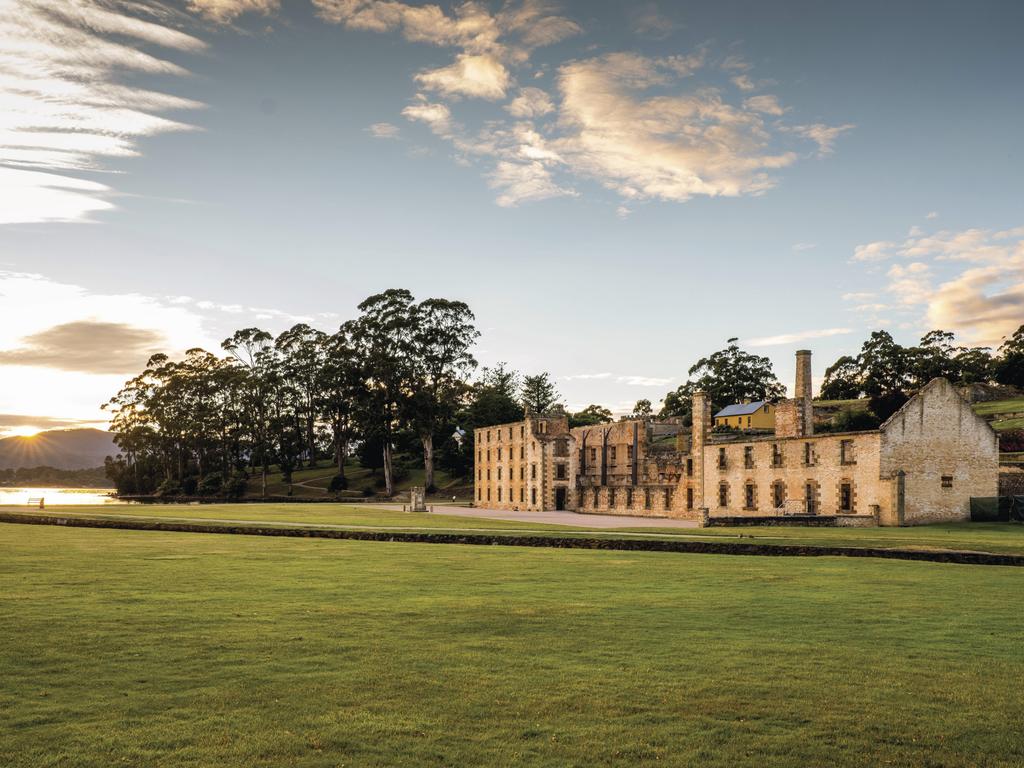
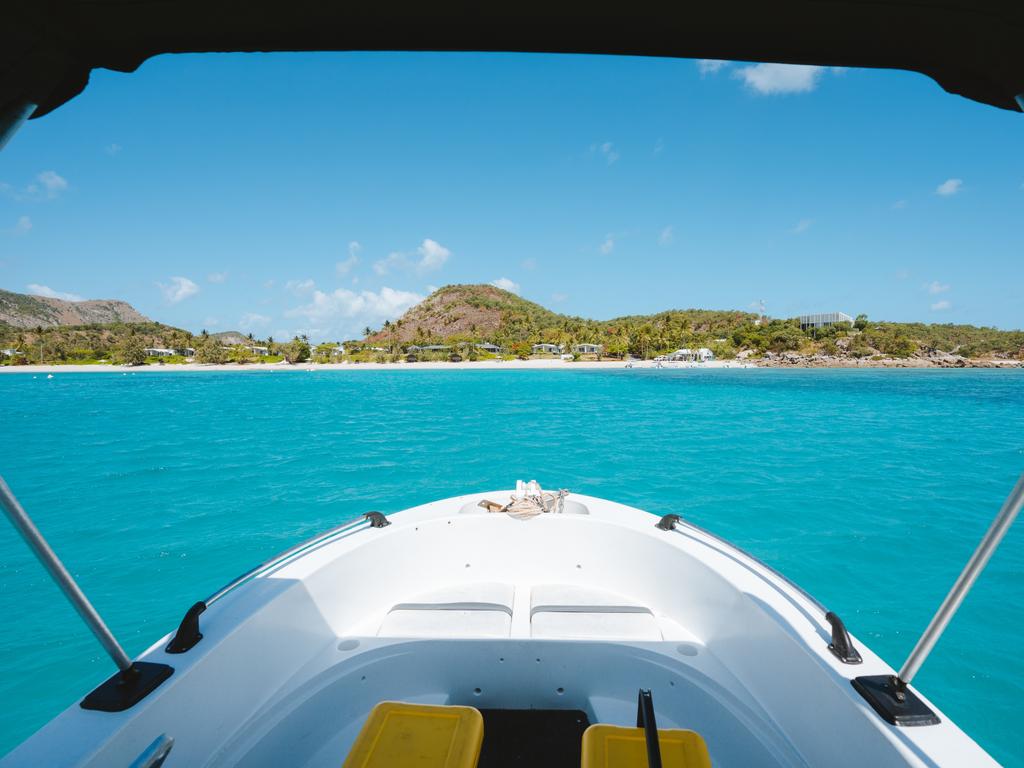
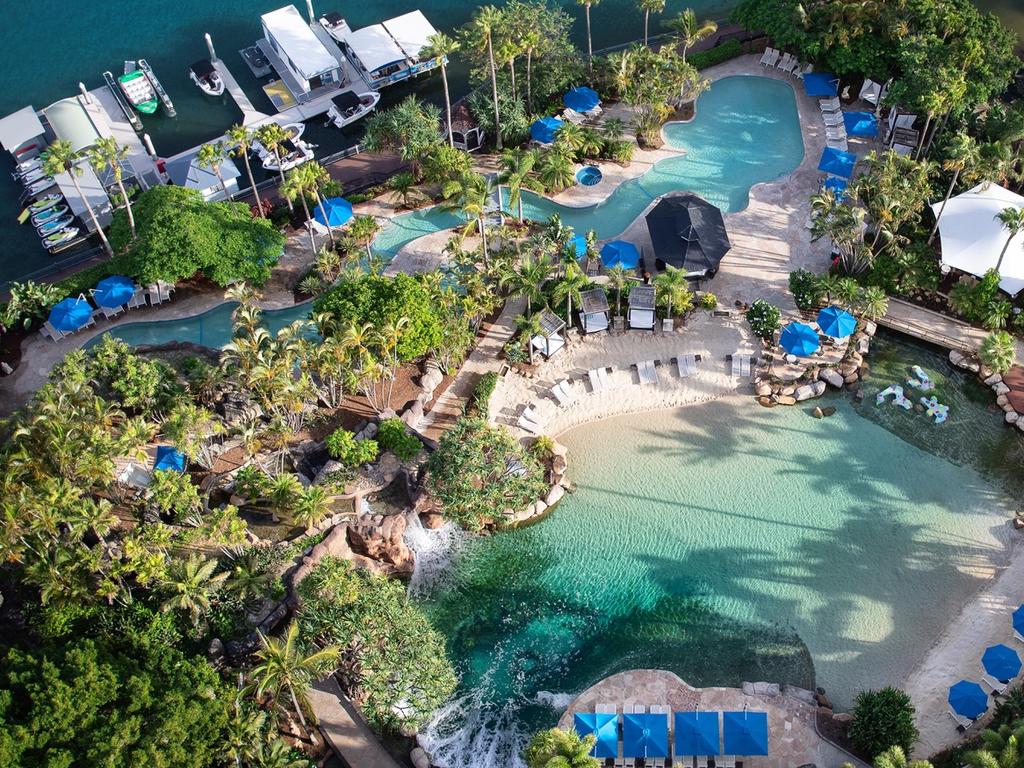

To join the conversation, please log in. Don't have an account? Register
Join the conversation, you are commenting as Logout